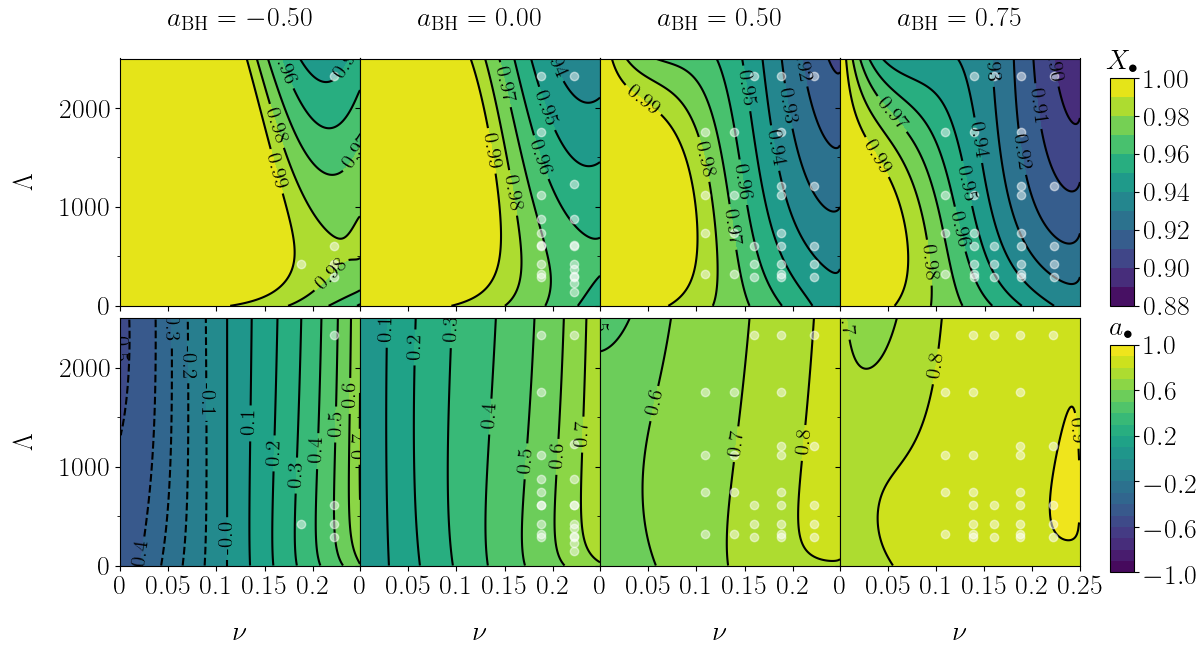Black-hole remnants from black-hole--neutron-star mergers
In 1903.11622 we construct a model for the remnant black hole produced by the collision of stellar-mass black holes and a neutron stars mergers (BHNS). We used a sample of numerical-relativity simulations and mapped the properties of the binary components to the mass and spin of the remnant black hole in a simple and physically accurate way.
As an application, we combine the remnant characterization with state-of-art population synthesis for binary formation. We predict that BHNS mergers produce a population of remnant black holes with masses narrowly distributed around 7M⊙ and 9M⊙. Assuming isotropic spin distribution of the initial BH implies that nonmassive accretion disks are favoured: no bright electromagnetic counterparts are expected in such mergers.
Our results will support LIGO-Virgo observations of BHNS systems as new sources of gravitational waves and the joint analysis with electromagnetic signals. While they predict (and will eventually explain) the lack of electromagnetic counterparts for these events, they also point out that a counterpart observation will heavily impact the most unknown physics: astrophysical spin distributions of the BH in the binary and the NS equation of state.
A python code of our model can be found here
Read more
